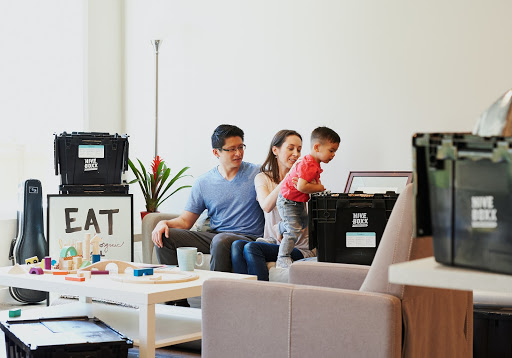How to move during COVID-19 — and to do it safely!
By Kate Torgersen on August 11, 2020

With COVID, work from home (WFH) and distance learning, American families are picking up and moving out. Whether it is to reduce their living costs or improve their quality of life, 26% of Americans are considering moving due to COVID.
Moving during these unprecedented times does not come without its challenges – especially when relocating your family, but it doesn’t have to be a scary experience. All it takes is some additional planning, patience and plenty of hand sanitizer!
Here are some practical tips for moving your shelter while many communities across America are still sheltering-in-place:
Professional movers or do it yourself?
While it’s tempting to save money and hire the college kids in your neighborhood, professional moving companies have adopted processes and protocols that will not only lighten your load, but also provide peace of mind for your family’s health.
- Getting an estimate: In the past, moving companies would come to your house, look around and provide you with a quote. These days, many moving companies have moved to virtual quotes. In some cases they will provide quotes in a Zoom call, in other cases they may have you complete a survey – either way, this is perhaps one of the ways that moving has gotten easier.
- Review your moving company’s COVID Policy: Moving companies are taking COVID seriously. When vetting vendors, make sure to review their COVID policies and protocols so you know what to expect and to ensure that the crew will be equipped with the necessary masks, gloves and disinfectant wipes. You will also want to confirm that their trucks and equipment will already be sanitized for your move.
- Clean as you pack & pack ahead of time: Pack with new, cardboard boxes and make sure to seal them up tightly. Stay away from those old boxes behind the grocery store! Also, make sure to spray/wipe the boxes down with Lysol as you pack. And, just as you want the crew to maintain safe protocols, you will want to do the same. For everyone’s safety, have your belongings packed 24 hours in advance and ensure that they remain untouched until the crew arrives.
- Feeling Sick or Unwell? Let your moving company know! Do not have movers come to your house if you or a family member is not well. Transparency is critical. Ask the moving company how they would like to proceed.
You Can Still Lighten Your Move through Donation:
- Food: Packaged and canned foods can be wiped down and packed in a box for donation to a food bank. Perishable and refrigerated items should be thrown out – or better yet, composted.
- Blankets and Towels: If you don’t want to move the entire contents of your linen closet, animal shelters will often accept donations of blankets and towels for animal beds. Contact your local animal shelter to see if you have anything that they can use.
- Toys & Books: Oh the toys! So many toys! Once your child or children have selected their favorites, divide the left over toys into 2 piles: donate and toss.
-
- Donation: Gently made toys can be donated to the Salvation Army and Goodwill. Many childcare centers will also accept donations of books, puzzles, games and sports equipment like balls.
- Toss: You may be able to recycle some of the toys. Check out these toy recycling programs:
- Hasbro Toy Recycling
- Terracycle Toy Recycling
-
Moving Breast Milk:
Of course, we also want to make sure that you have a solution for moving your stash of frozen breast milk. When it comes to transporting a large quantity of breast milk, you can’t beat the Milk Stork Stash Mover. The Stash Mover takes the worry out of safely transporting your frozen gold – keeping up to 180 oz frozen for up to 96 hrs! Make sure you freeze your milk flat so everything fits snuggly in the box.
Lastly, don’t forget to tip! To minimize contact, ask your moving crew if they will accept Venmo or Paypal instead of cash.
So there you have it, with some extra cautionary pre-planning, you can relocate safely even during these unprecedented times.
Planning a move during the pandemic? Leave a comment and share your experiences or any helpful tips with us!


